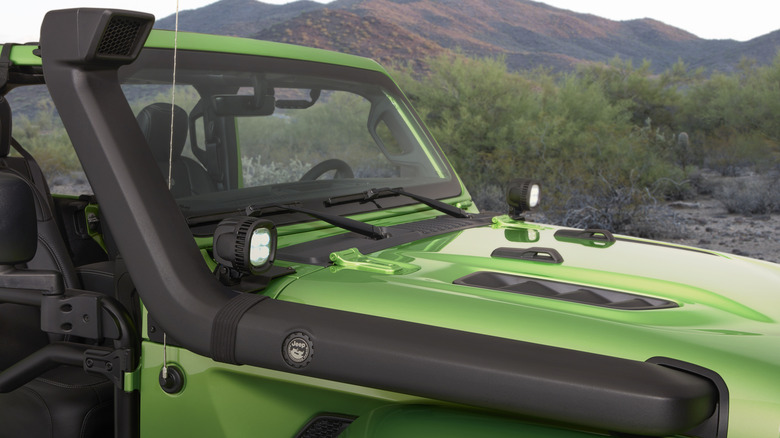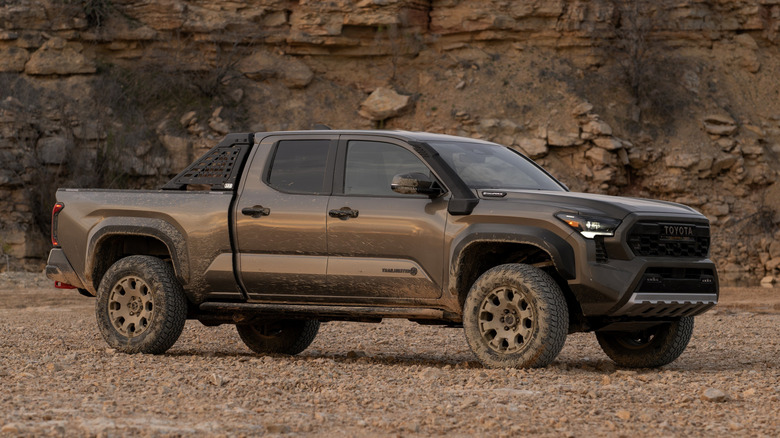Why Do Some Cars And Trucks Have Snorkels?
Snorkels used to be a relatively uncommon modification, even among off-roaders. Every once in a while, you'd see a fully-built desert machine with a snorkel — something tinkered with and tweaked to tackle every terrain in the American wilderness. Built with total off-road domination in mind, it would have big all-terrain tires, a winch in the front bumper, steel rock rails, thick skid plates protecting the engine and the transmission, maybe even a ladder to climb up and bring down recovery gear from the roof rack.
But now, snorkels are included as optional extras or dealer-installed accessories, sometimes even standard equipment on a number of SUVs and pickup trucks. What do these big smoke-stack-looking pieces of plastic do? They help a vehicle's engine breathe (or pull in air for combustion) when extreme conditions like sand, dust, or water might prevent it otherwise.
For instance, if you're fording a stream during an off-road adventure and you don't want to hydrolock your engine, having an intake that's above your windshield will help you to avoid sucking water into the engine — a destructive prospect at best. Or out on the desert floor at high speeds, there's lots of dust and debris at lower levels near the tires, so having a snorkel mounted high up can help provide clean air to your engine, resulting in better performance. Essentially, it's a performance modification for serious off-roading.
Who's putting snorkels on their vehicles?
Much like a swimmer using a snorkel and goggles to explore a coral reef, a vehicle uses a snorkel as a tool to go further and explore more untouched areas. But who's doing that kind of exploring?
If you're looking for an example of a snorkel as original equipment on a vehicle, look no further than rugged off-road rigs. Pickup trucks and off-road oriented SUVs like the Toyota Tacoma and the Toyota 4Runner both offer snorkels on their most-serious adventure trims like the Trailhunter (they technically call the snorkel a "high-mount air intake"). Ford is no stranger to snorkels, offering one as factory- or dealer-installed on certain trims of the Bronco and the Ranger. And, of course, Jeep is no stranger to off-road accessories like snorkels, having offered many versions of snorkels over the years on both the Wrangler and Gladiator.
Many snorkels are relatively inexpensive to buy from the manufacturer or on the aftermarket, but installing them can require cutting or removal of some body panels, so be sure to look at the instructions before purchasing one and installing it on your vehicle. They also aren't a guarantee that water won't damage your engine while off-roading — so be sure to read the fine print in your owner's manual before crossing any body of water.

